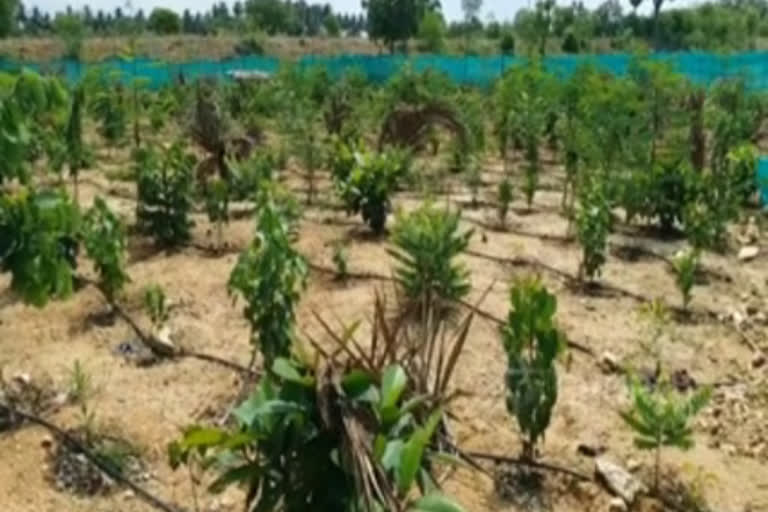Coimbatore: While the world is reeling under environmental problems such as global warming and climate change, a village in Coimbatore has shown the way in tackling the issues by setting an example worth emulating by others. In the green initiative, people in the village have adopted the Japanese technique in creating a mini-forest.
Launched with a lofty goal of planting 10,000 saplings, their scheme, which has, so far, witnessed the planting of 2,000 saplings, will go a long way in raising the depleting groundwater table and making the village lush and plush again, people in the village said.
The village, which has gone the extra mile to deal with the rising temperature and depletion of water bodies – the spin-offs of too much industrialization, is a remote one that may be unheard of by the people across Tamil Nadu.
The people in Semmani Chettypalayam, a village near the town panchayat of Masakavundan Chettypalayam in Annur region in Coimbatore district, has borne the brunt of the mushrooming growth of iron and steel factories for the past 10 years.
Also read: On his first official visit as CM, Stalin inaugurates COVID care centres, launches vaccination drive
The lack of seasonal rains that often played truant, depletion of lakes and rivers, decline of groundwater level below 100 feet, dwindling cattle-rearing and soaring heat have all made the villagers insightful of the actions that led to environmental mess-up. So, they decided to plant 10,000 saplings which, they believed, would bring forth rains, reduce warming levels and cause a good environmental make-over.
Adopting what is known as Miyawaki method (named after Japanese botanist Akira Miyawaki) which lays stress on planting saplings native to the soil and suitable to the texture of the soil, the villagers began executing their plan to create a mini-forest by planting 2,000 saplings around a pond on the northern side of their village. They dug a 150-foot-long and 125-foot-wide pit and filled it with dried-up waste. On the land leveled above the pit closed thus, they planted rare saplings of custard apple, simarouba glauca, poovarasan (Portia), novel, vilvam and neem.
Also read: Stalin urges President to pardon Rajiv Gandhi assassination convicts
Packiaraj, a teacher, said, "We have planned to make our village a model to others. In the first phase, we have completed the planting of 2,000 saplings. We hope our greenery initiative will increase rains and groundwater level. It is a decision taken by the whole village with people’s support. It will also be an inspiration to our youth." He also added that fences will be built with the support of town panchayat under the National Rural Employment Scheme.
Raghuramana, a resident of the village, said, “The groundwater table in our village has gone down below 100 feet. All our fertile land has become a sterile wasteland. Hence, the farms where cultivation of paddy and other cereals was happening once have now become residential plots."
"Hence, to beat the drought and to create a green and eye-candy ambience, we have resolved to create a mini-forest with the support of our people. We put forward our proposal, which insisted on the implementation of the concept ‘A pot of water from each house and a sapling from each person,’ and it met with good reception from our people," he said.
Seeing the successful pace of our scheme, the youth in the neighboring villages too have felt so inspired as to emulate our model of afforestation. Our efforts will, in the long run, transform our village into a green forest and a sanctuary for birds. Prosperity and richness will ultimately return to our village,” Rathuramana said.
Also read: Tamil Nadu: Rajiv Gandhi murder convict donates money to CM Relief Fund



